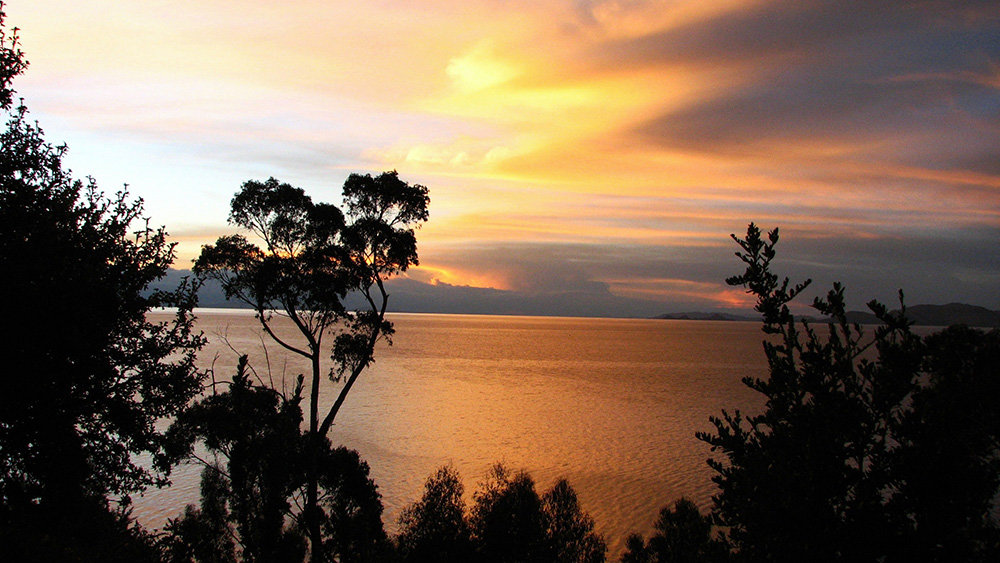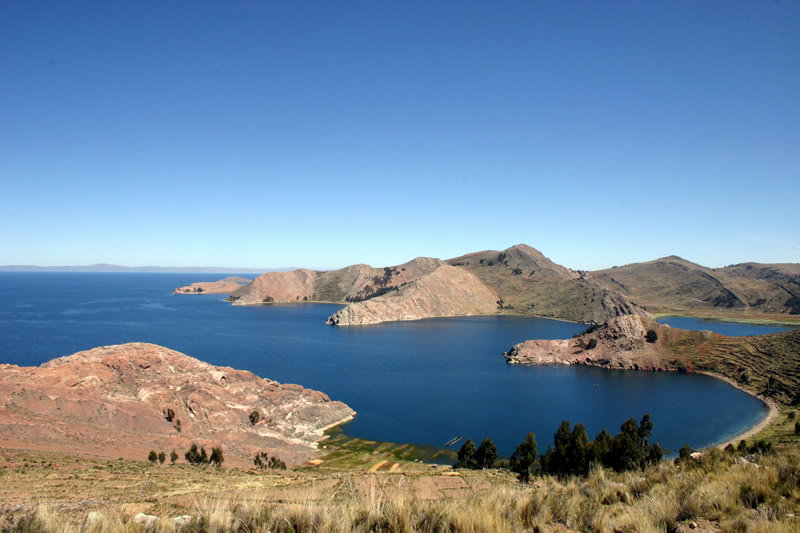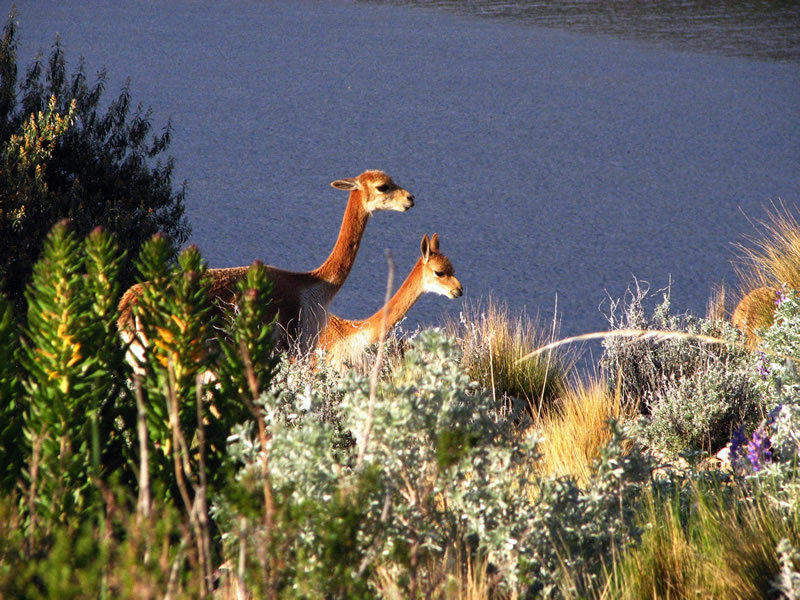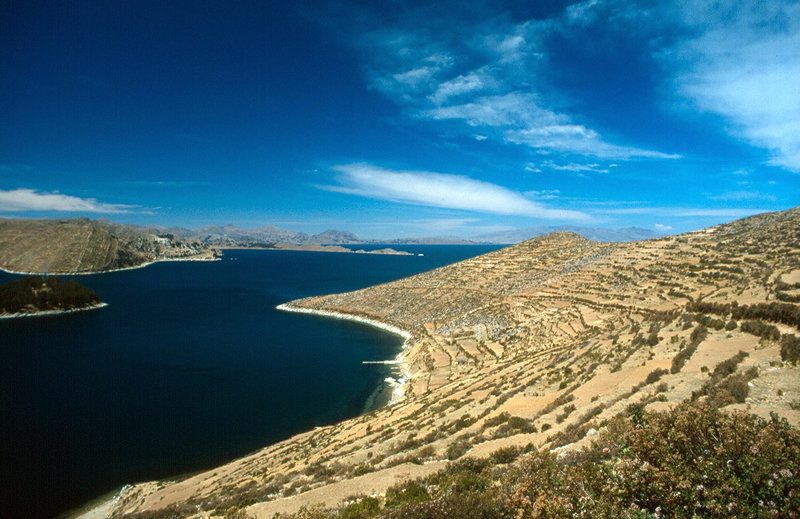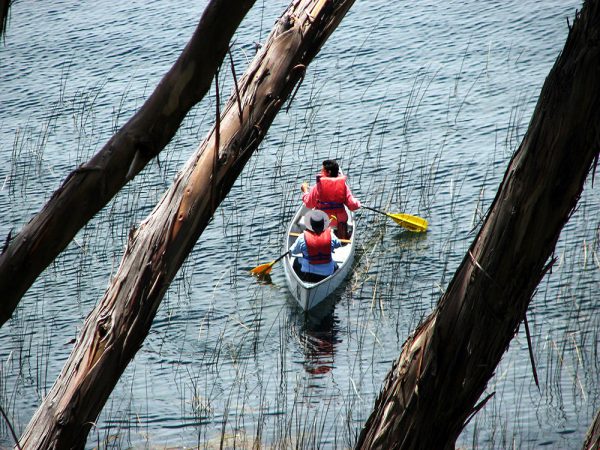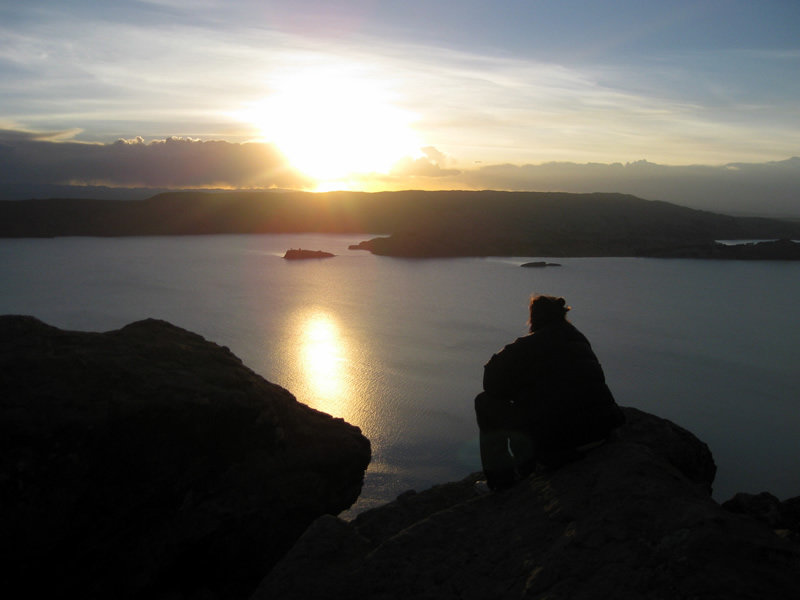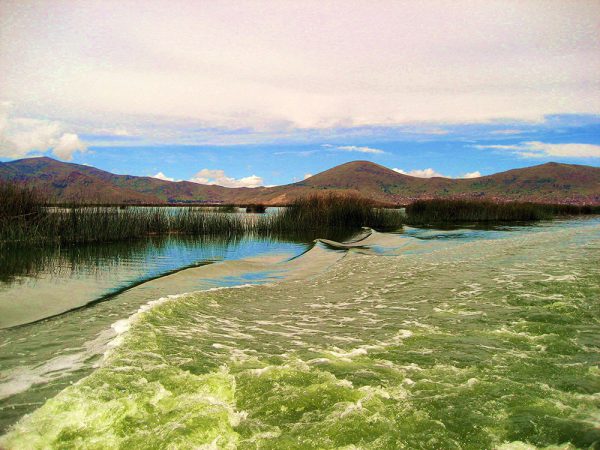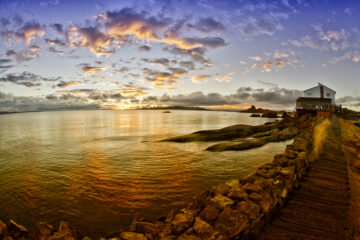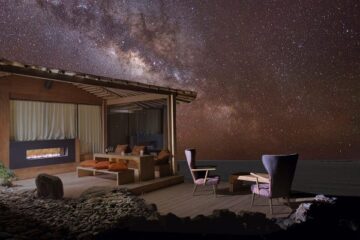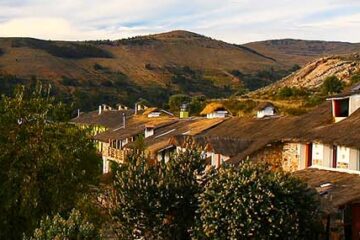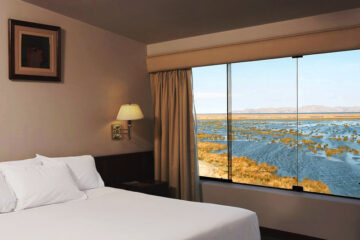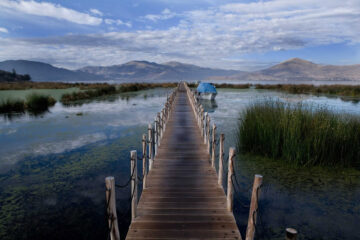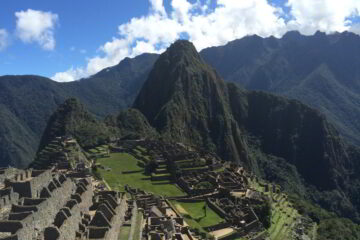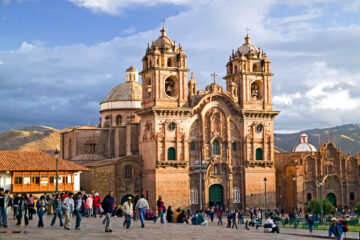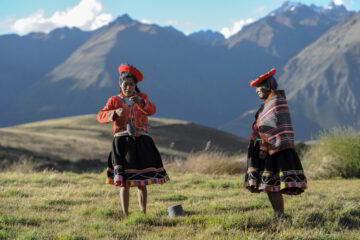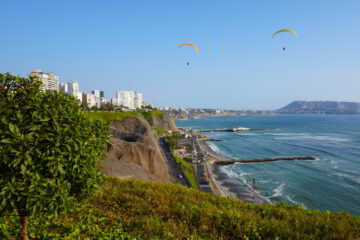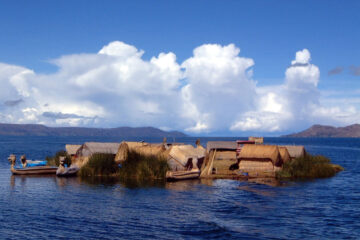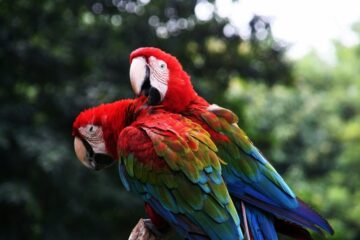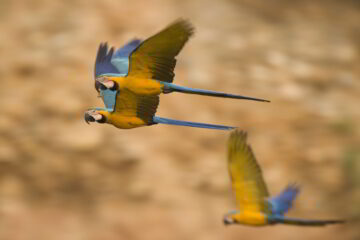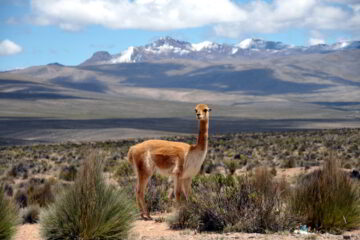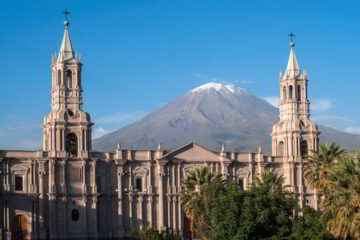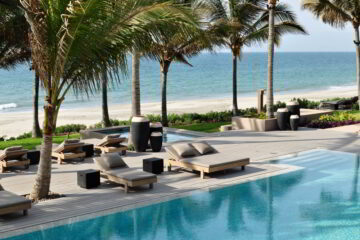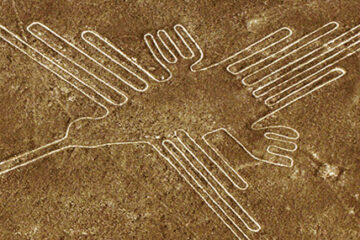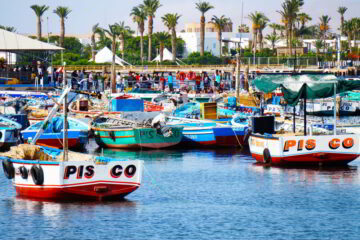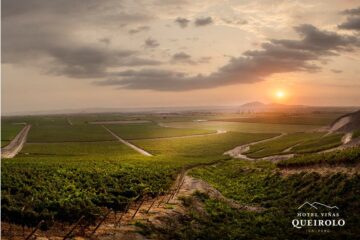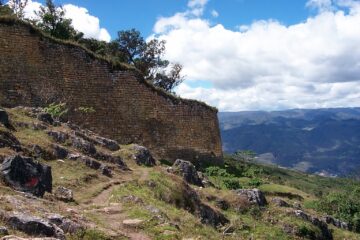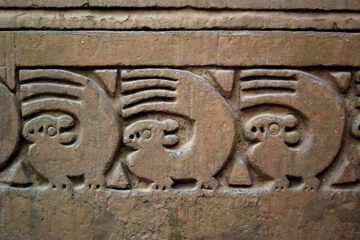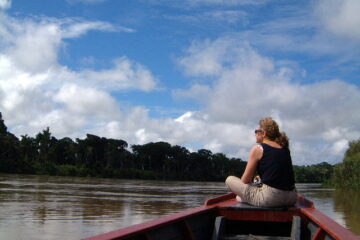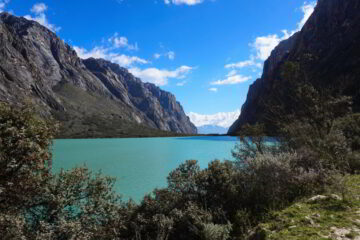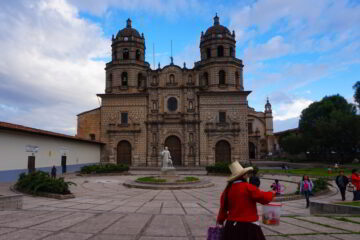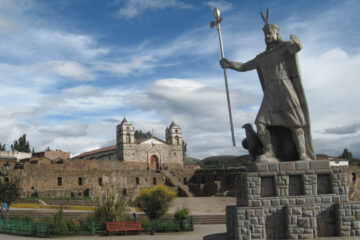Lake Titicaca is the highest navigable lake in the world, straddling the border between Peru and Bolivia. Its bright, reflective blue waters are said to be the birthplace of the Incas. The lake is home to numerous ruins as well as traditional contemporary villages.
Looking out over an impossibly deep blue body of water stretching as far as the eye can see, visitors to Lake Titicaca could be forgiven for thinking that they were standing before an ocean
Located in both Peru and Bolivia, Lake Titicaca has been a sacred icon and preferred settlement area of Andean peoples since as early as 1000 BC. Bracing thin air, rugged landscape aside gentle lapping water, the fauna of the highlands, and lake-dwelling indigenous populations are some of the main draws to Lake Titicaca. The folklore of these communities is often considered to be the richest in Peru with many notable religious celebrations, such as Candelaria, taking place throughout the year.
Recommended For
- Adventurers
- Nature Lovers
- Culture Connoisseurs
Things to do
- Visit islands on Lake Titicaca to learn about traditional, local lifestyles
- Cruise to the floating islands of Uros to see how locals build their home with reeds
- Sit back and enjoy the natural landscapes on Suasi Island or at Titilaka Hotel
Sample journeys to Lake Titicaca – Peru
We work hand-in-hand with you to craft a truly tailor-made Lake Titicaca – Peru travel experience
The Golden Age of Travel: Luxury Peru by Rail
Visit Peru's top destinations by train
The Pillars of Peru: Coast, Jungle, Mountain
An adventure across Peru’s unique geography
Guide to Lake Titicaca
Lake Titicaca is divided in several sections, including the Bay of Puno, the Lago Mayor (on the Peruvian side), and Winaymarca (on the Bolivian side). Lake Titicaca also has 40 fascinating, unique islands floating in its waters, the most well-known of which are the Uros floating reed islands on the Bay of Puno; Taquile and Amantani islands on the main Lake; and Sun and Moon Island on the Bolivian side of the lake.
Despite its geographical prominence and international renown, Lake Titicaca is largely unexplored. Few visitors go beyond the tourist areas, so the Lake still has large expanses of pristine areas with abundant bird life and unique flora. There is even an ecological reserve on Suasi Island providing a showcase of the flora and fauna of this magical region.
Today the shores of the lake are dotted with a diverse array of indigenous communities and old colonial towns, boasting superb baroque churches and pre-Inca and Inca archaeological remains. Many of the inhabited islands show signs of long-standing settlements. The archaeological remains, ancient agricultural terracing, and rich folk tradition hint at an extensive cultural legacy.
For low impact trips to Peru, we recommend a visit to Lake Titicaca with interaction with the local communities to learn about traditional, local lifestyles in a responsible way. Aracari arranges homestays on Lake Titicaca. e Titicaca.
How to get to Lake Titicaca
Lake Titicaca can be easily reached from Cusco and Lima with direct flights to Juliaca, the closest airport to Lake Titicaca. It is also possible to take the Titicaca train for a superlatively scenic day trip from Cusco to Puno (or in reverse). There is also a luxury overnight sleeper train, the Belmond Andean Explorer, with schedules that connect Cusco and Lake Titicaca, optionally continuing on to Arequipa. Overland by road, the Colca Canyon is also in easy reach.
If travelling to or from Bolivia, it is possible to reach Bolivia’s capital in a day from the Peruvian side of Lake Titicaca.
When to go
During the drier seasons, from May to October is ideal. Travel from November to March can include heavy downpours.
How long to visit
We recommend two nights at Lake Titicaca. For the hotels closer to the airport – in the Bay of Puno – one night is possible. For properties further away, like Titilaka, or Suasi Island, two nights minimum is required.
Highly recommended accommodations in Lake Titicaca – Peru
Lake Titicaca is simply stunning and there are a range of properties to admire the views from. Most people stay within the city of Puno, which simply serves as a launchpad to take boat trips to the islands. However, luxury accommodation is found elsewhere – either five-star Titilaka, on the shores of the lake, or stylish Amantica villa. Suasi Island offers a great escape to enjoy the natural surrounds – the relative distance to reach Suasi means we recommend a minimum of two nights there. It is also possible to stay in a local homestay. These are some of the best options for where to stay on Lake Titicaca.

